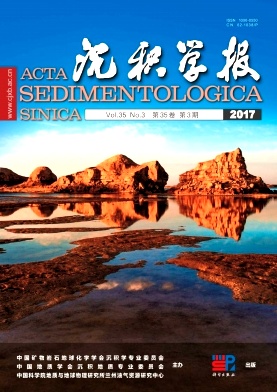Rock Magnetic Properties and Paleoclimate Implications of Late Cenozoic Terrigenous Succession from the Southern Chaiwopu Basin, Xinjiang
doi: 10.14027/j.cnki.cjxb.2017.03.010
- Received Date: 2016-03-15
- Rev Recd Date: 2016-07-04
- Publish Date: 2017-06-10
-
Key words:
- rock magnetism /
- aridification /
- Late Cenozoic /
- Chaiwopu Basin /
- the north piedmont of the Tian Shan
Abstract: The history and mechanism of aridification in the Asian interior during the late Cenozoic have been an important scientific issue. This study presents the terrigenous deposits from the ~303 m-thick Urumqi River section (URS) in the southern Chaiwopu Basin of the northern Chinese Tian Shan foreland. Based on the results of magnetostratigraphic chronology and rock magnetic characteristics, we discussed the magnetic enhancement mechanism of the URS sediments and paleo-climatic implications during the late Cenozoic in this region. The magnetostratigraphic chronology constrains the time spans from about 6.8 Ma to about 3.3 Ma. The results of rock magnetic and diffuse reflection spectrum (DRS) measurements show that the magnetic minerals in the URS sediments are mainly magnetite and hematite, and some magnetic parameters, such as χlf, χARM, SIRM,S-100mT, S-300mT, χARM/SIRM, changed obviously at ~6.3 Ma and ~5.2 Ma. These changes reveal that the measured samples contain coarser magnetic grains with less magnetic grains (after ~6.3 Ma). In contrast, the magnetic grains became finer steadily before ~5.2 Ma, with the content increasing. By the analysis of rare earth elements (REEs), we know that the distribution patterns of rare earth elements (REEs) are consistent obviously. The analysis of rare earth elements (REEs) is likely to indicate a stable source area of the URS deposits. The sediment grain size can also be used to explain variations of terrigenous deposits magnetic characteristics. There are significant correlation relationships between the sediment grain size parameters and χlf,χARM/χlf, the insignificant correlation relationships between the magnetic parameters, such as χARM, SIRM,S-100mT, S-300mT, χARM/SIRM, χfd, and the sediment grain size parameters indicate that the observed variations of magnetic characteristics may not be mainly caused by the sediment grain size parameters. The continuous aridification in the present study area is more likely to be the main cause of the variations of magnetic characteristics. The continuous aridification can contribute to the oxidation of magnetite, which can be used to explain variations of terrigenous deposits magnetic characteristics. In order to verify the results, we make the DRS analysis. The results show that the study region occurred aridification obviously at ~6.3 Ma and ~5.2 Ma. The results of the DRS analysis show the similar paleo-climatic change.
| Citation: | WANG Zhen, QIU SiJing, CHEN YiFan, CHENG Lu, LÜ, HongHua. Rock Magnetic Properties and Paleoclimate Implications of Late Cenozoic Terrigenous Succession from the Southern Chaiwopu Basin, Xinjiang[J]. Acta Sedimentologica Sinica, 2017, 35(3): 516-526. doi: 10.14027/j.cnki.cjxb.2017.03.010 |






 DownLoad:
DownLoad: